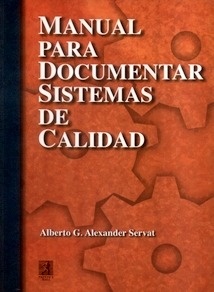Reseña o resumen
Features
Explores how modeling provides insights into infectious disease control
Focuses on the important uses of data to estimate key model parameters and inform the choice of model
Requires only a modest amount of prior mathematics to understand the core material
Covers outbreaks that arise when an infectious disease is newly introduced
Maximizes relatively simple models by translating well-known results from the theory of branching processes to the infectious disease context
Presents models that describe the dynamics of transmission over time and introduces time-dependent public health interventions
A solutions manual is available upon qualifying course adoption. Solutions to even-numbered exercises will be available from the Downloads tab on the book's CRC Press web page.
Summary
Effectively Assess Intervention Options for Controlling Infectious Diseases
Our experiences with the human immunodeficiency virus (HIV), severe acute respiratory syndrome (SARS), and Ebola virus disease (EVD) remind us of the continuing need to be vigilant against the emergence of new infectious diseases. Mathematical modeling is increasingly used in the management of infectious disease control as a way to assess interventions relatively quickly, cheaply, and safely. Modeling to Inform Infectious Disease Control shows readers how to take advantage of these models when developing strategies to mitigate infectious disease transmission.
The book presents a way of modeling as well as modeling results that help to guide the effective management of infectious disease transmission and outbreak response. It discusses the requirements for preventing epidemics and ways to quantify the impact of preventative public health interventions on the size and dynamics of an epidemic. The book also illustrates how data are used to inform model choice.
Accessible to readers with diverse backgrounds, this book explains how to gain insight into the management of infectious diseases through statistical modeling. With end-of-chapter exercises and glossaries of infectious disease terminology and notation, the text is suitable for a graduate-level public health course. Supplementary technical material is provided at the end of each chapter for readers with a stronger background in mathematics and an interest in the art of modeling. In addition, bibliographic notes point readers to literature in which extensions and more general results can be found.
Introduction
Motivation
Terminology
Scope and layout of the book
Minor outbreaks when infectives are homogeneous
When are outbreaks certain to be minor?
Preventing epidemics by mass immunization
Reproduction number
What is a minor outbreak?
Probability of a minor outbreak
Importation of the infectious disease
Estimating R
Minor outbreaks in a community of households
Modified allocation of offspring
Household reproduction number
When are outbreaks certain to be minor?
Mass immunization
Are results affected by the way the infection is imported?
Estimating RH
Minor outbreaks when individuals differ
Type-specific offspring distributions
When are outbreaks certain to be minor?
Mass immunization
Types of individual in a community of households
Two reproduction numbers for a community of households
Transmission intensity function
Describing transmission intensity by a function
Estimating the transmission intensity function
Role of the transmission intensity function in modeling
Partially effective vaccines
Vaccine effect on transmission between individuals
Impact of mass immunization on the reproduction number
Estimating vaccine effects
Social distancing
What is social distancing?
Reduced mixing
Isolating symptomatic infectives
Targeting high transmission intensities
Reducing epidemic size
Simulated epidemics
The nature of our deterministic epidemic model
Epidemic size in a homogeneous community
Mass immunization
Herd immunity
Estimating the reproduction number
Types of individual
Dynamics of infection incidence
The epidemic curve
Estimating parameter values from daily incidence data
Endemic transmission
Using data to inform model choice
Model-free comparison of data on outbreak size
Transmission among homogeneous individuals
Allowing transmission rates to differ between individuals
Terminology and notation
References
Subject index

